Architectural Gems of Independence: Iconic Buildings from India’s Post-Independence Era
Our references inevitably returns to history and culture when we look at India’s architectural marvels. Historical monuments of India from each era are remarkable in their own, whether colonial, neoclassical, or Mughal architecture. Indians can be proud of their country’s wonders and their recognition as notable sites worldwide. However, the post-independence iconic buildings in India haven’t gained worldwide popularity yet.
Even though we are renowned for and proud of historical buildings in India, given how far we have come since gaining our freedom, it is time to look farther away from iconic historical sites like the Taj Mahal and Mysore Palace. Let’s look at 5 post-independence architectural wonders from India that demonstrate the development and innovation of the nation throughout this time.
Lotus Temple, Delhi
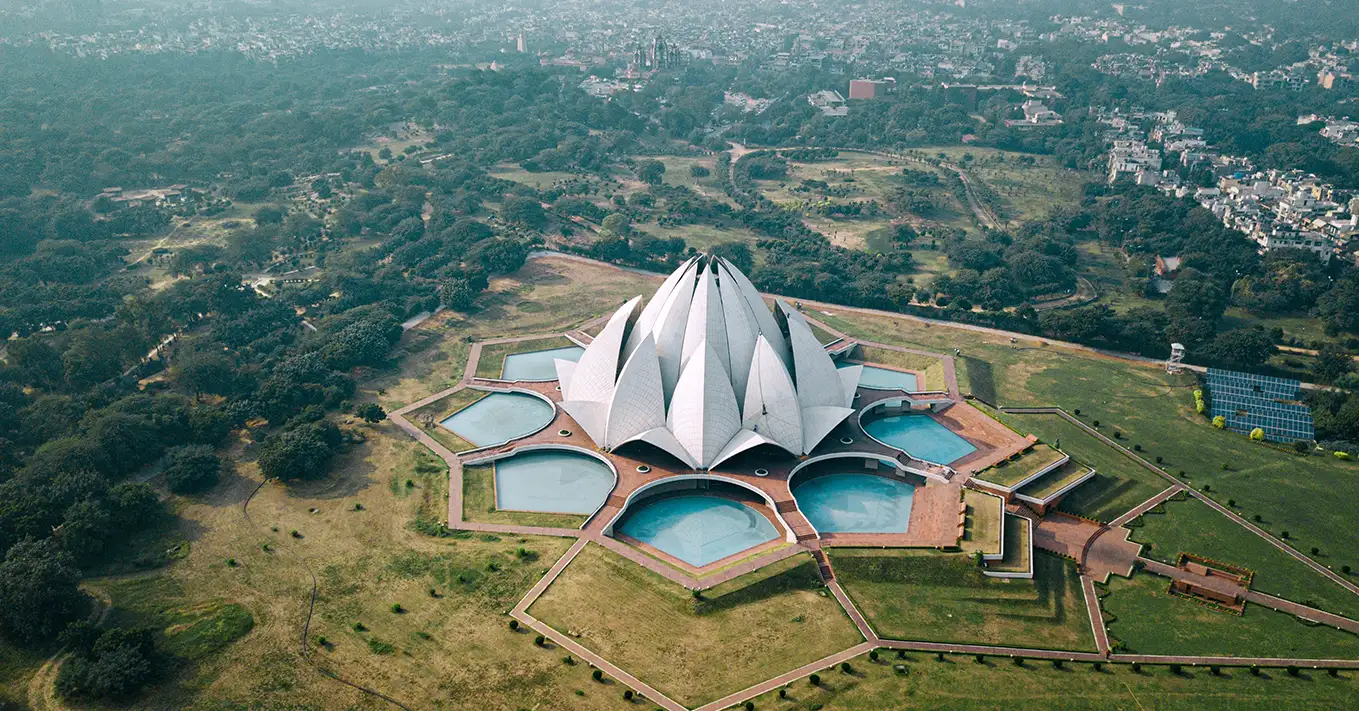
Built in 1986, the Lotus Temple is one of the most iconic post-independence iconic buildings in India. Fariborz Sahba built this architectural marvel to serve as a symbol of harmony and spirituality. The lotus-inspired design of this structure consists of 27 marble petals, representing the fusion of several religions into a single space for reflection. The architectural importance of the Lotus Temple is its ability to bring tranquillity and inclusion while simultaneously being a haven for individuals from different backgrounds to find emotional and spiritual solace.
Auroville Dome, Pondicherry
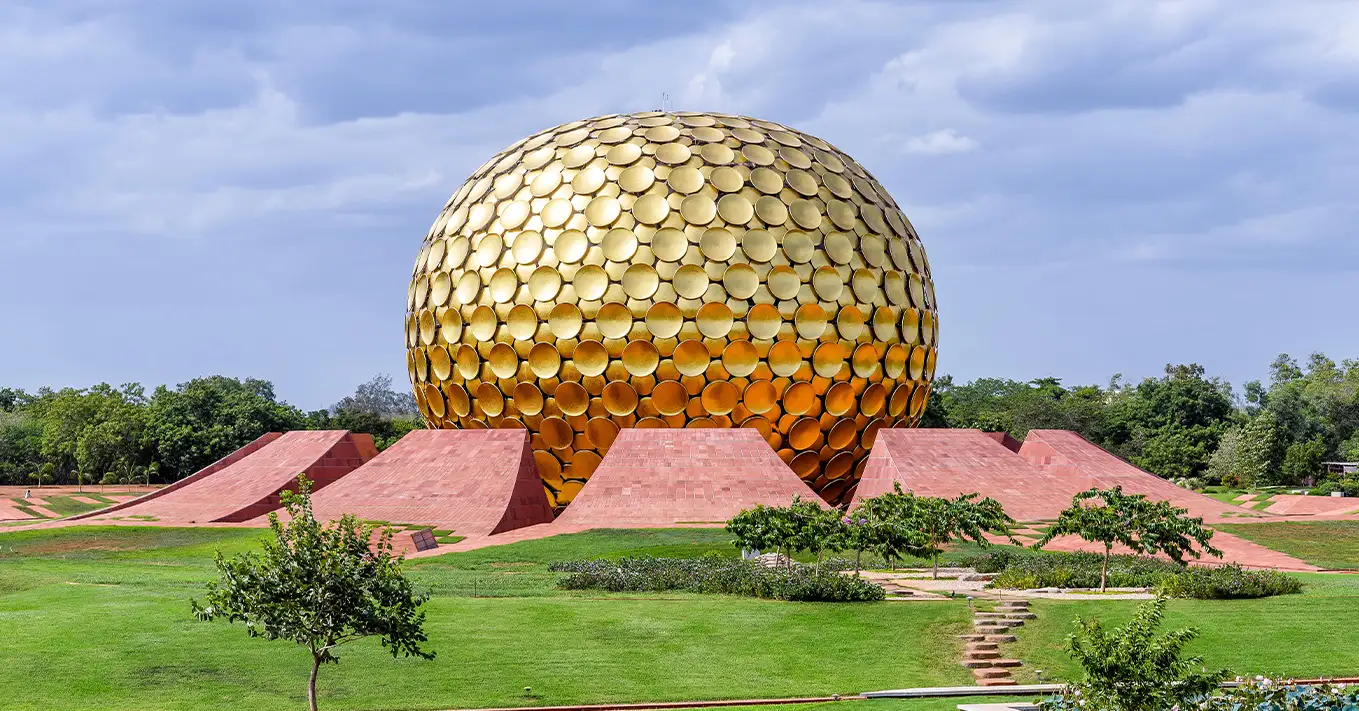
Often called the Auroville Matrimandir, was constructed in 2008 and embodies “The Mother’s” concept. French architect Roger Anger constructed this well-known meditation centre as a showcase for how spiritual ideas and exceptional architecture coexist. It is shaped like a massive sphere with twelve petals surrounding it. The Geodesic dome is covered with golden discs reflecting sunlight, giving the building a distinctive glow. The golden dome is a focus for reflection because it is surrounded by lush greenery. Auroville’s ideals of human harmony and cultural diversity are perfectly embodied in its seamless mix of beauty, spirituality, and magnificent architecture. You can visit the inside of the central dome where there is a meditation hall known as the inner chamber.
Rajkumari Rajnavati School, Rajasthan
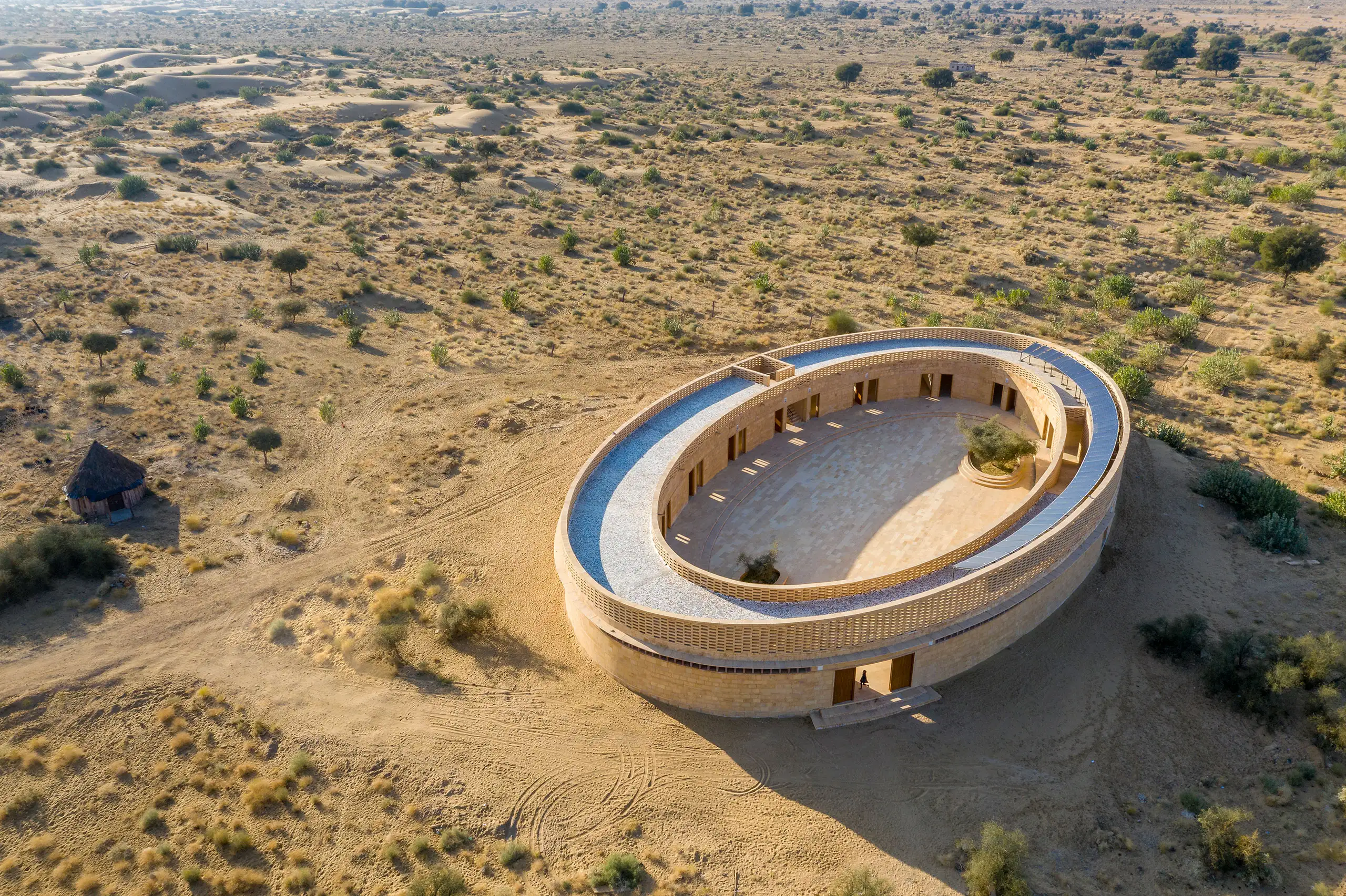
This unique institution stands out in terms of design and mission. In Jaisalmer, the Rajkumari Rajnavati School was built in 2017, reflecting Diana Kellogg’s vision. This oval-shaped building in the middle of a desert is one of the most distinctive and unique architectural marvels ever made in India. The elliptical-shaped building, made of lime plaster and pointed towards the prevailing winds, is intended to circulate air effectively. The school was constructed using precut golden sandstone by Jaisalmer Stonemasons. The school’s oval geometry represents the power of women, thus showing the project’s ethos.
Cybertecture Egg, Mumbai
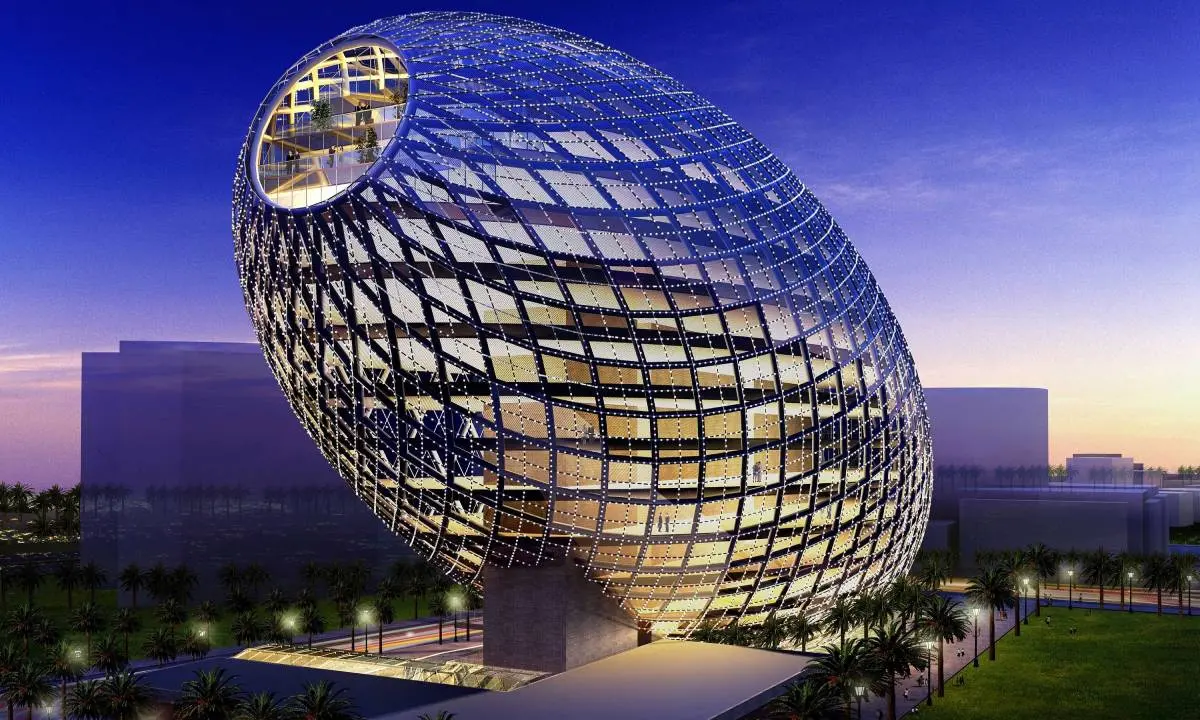
This sustainable building representing India’s technological growth was constructed in Mumbai in 2010. James Law created this egg-shaped structure with inspiration from a vessel. The ideology was to personify the planet as a self-sustaining vessel comprising an ecosystem permitting life’s existence, growth and subsequent evolution. The architecture of the future and interactive technology are masterfully combined in cybertecture. India’s aspirations for modernity and innovation are embodied by the building’s distinctive egg-shaped façade of LED panels. This structure is a sustainable ecosystem that has been created by intelligent design. It offers a dynamic user interface in the real world and complements it with easy access to virtual areas.
Vidhana Soudha, Bangalore
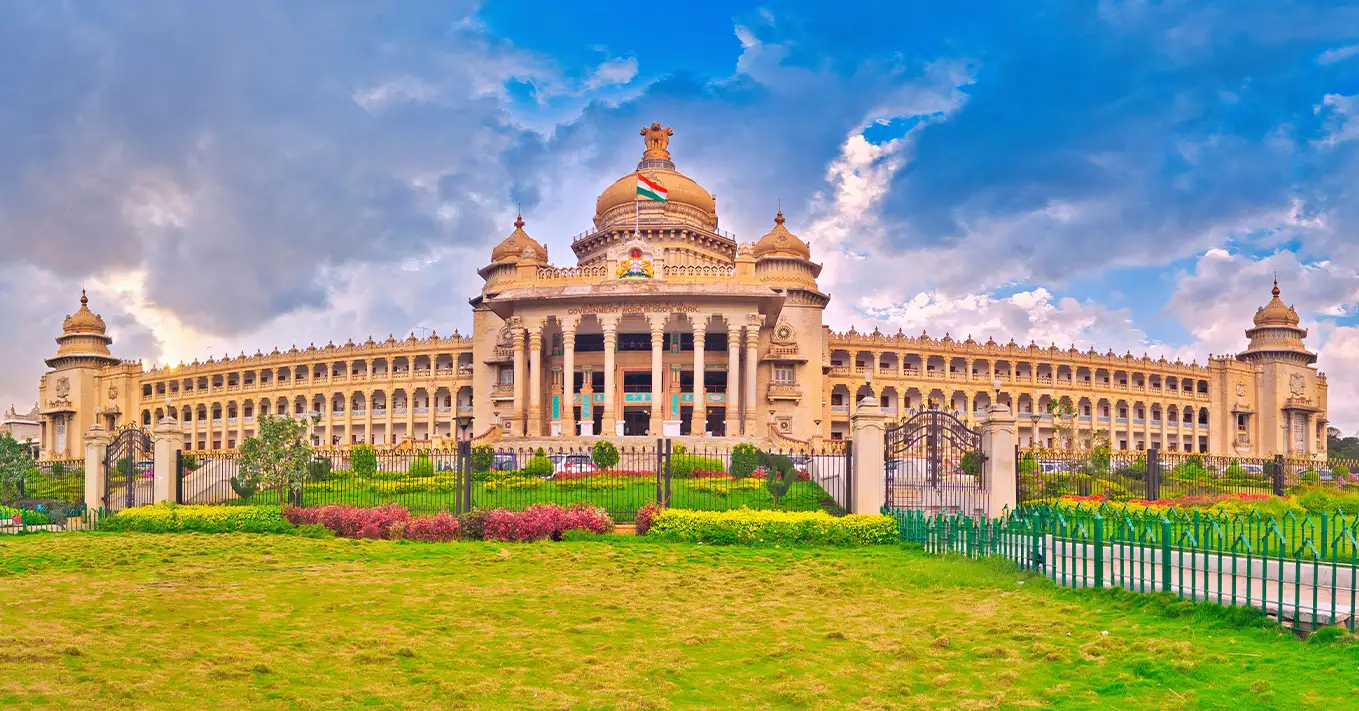
The Vidhana Soudha in Bangalore was conceptualised by the then Chief Minister of Karnataka, Kengal Hanumanthaiah, and built by B. R. Manickam in 1956. This building perfectly illustrates democratic principles and magnificence, with the State Legislature and the Secretariat housed in this building. The imposing white structure was designed using Mysore Neo-Dravidian architecture, with various Indo-Saracenic and Dravidian influences. Granite and porphyry were used exclusively in the construction of the Vidhana Soudha. The building’s entrance is decorated with the national symbols of India and has four domes on each corner. This building definitely also counts as a historical building in India that was built right after Independence. The builders in Bangalore proved their excellence in this architectural marvel.
These architectural wonders that are the post-independence iconic buildings in India show the nation’s development, richness and aspirations. Each building tells a different story of India’s progress toward modernity and unity, from the Lotus Temple’s inclusive spirituality to the Auroville Dome’s serene spirituality, the Rajkumari Rajnavati Girl’s School’s empowerment-driven design, the Cybertecture Egg’s technological innovation, and the Vidhana Soudha’s embodiment of governance.
These marvels of architecture serve as a reminder that architecture shapes environments, affects mindsets, and reflects societal values in addition to creating physical structures. These post-independence architectural treasures represent the country’s architectural excellence, progressive spirit, and unwavering commitment to a better future as India continues to develop globally.
At Sterling, our homes take inspiration from many such architectural marvels to offer you a home that transcends the ordinary. We combine the best of architecture as well as other living facilities so that you can live your dream life with the pioneers of the real estate industry in Bangalore. Check out our projects, today!
- August 24, 2023
- No Comments
